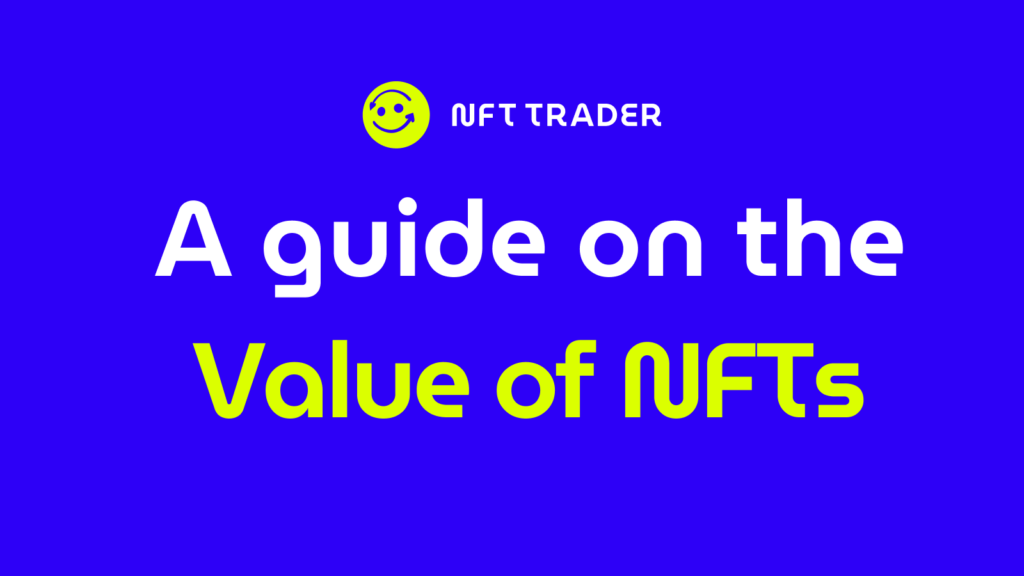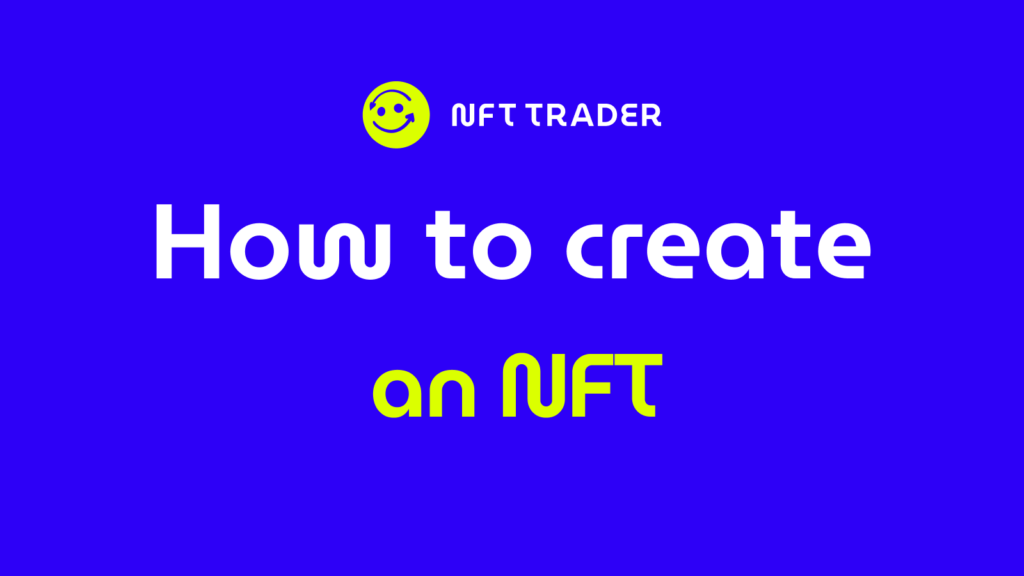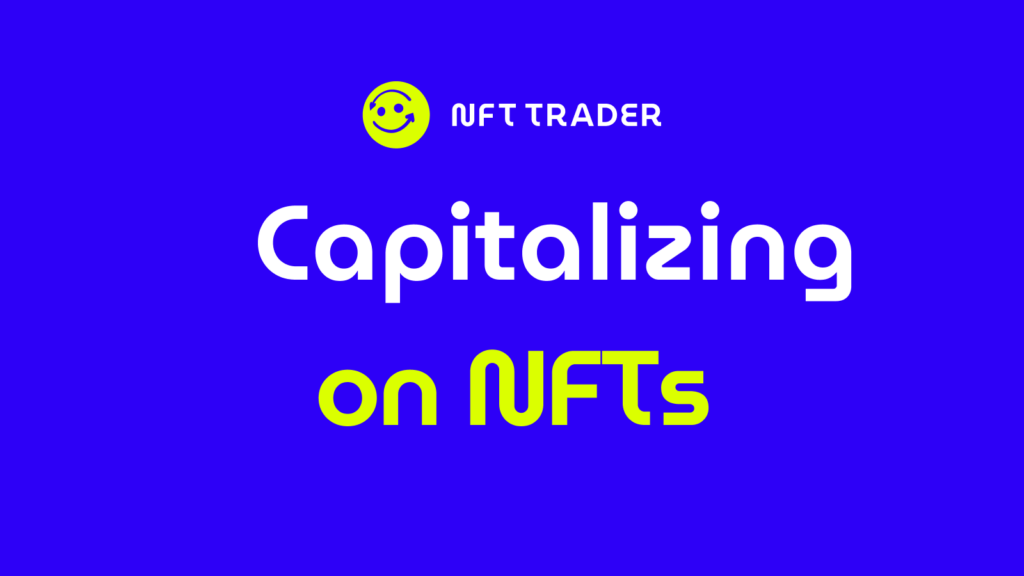Value of NFTs: a definitive guide to determining their worth

Summary:
- Introduction to NFTs and the complex nature of determining their value
- Main Factors Influencing NFT Value
- Methods of Appraising NFTs
- Challenges in NFT Valuation
- Practical Tips for Buyers and Sellers
Introduction to NFTs and the complex nature of determining their value
What is NFT Value?
Unveiling the Distinctive Value of NFTs in Contrast to Traditional Assets
In the dynamic landscape of blockchain technology, Non-Fungible Tokens (NFTs) have emerged as a pioneering concept, reshaping the perception of asset value. Unlike traditional assets, NFTs derive their worth from their unparalleled digital uniqueness, verified authenticity, and blockchain-based ownership. This article delves into the essence of NFT value, highlighting its divergence from conventional assets and the intricate factors influencing its perception.
Decoding NFT Value
The value of an NFT encompasses a blend of objective and subjective facets. At its core, an NFT’s value emanates from its one-of-a-kind nature, scarcity, and the ownership rights it confers over exclusive digital content. The blockchain’s role in verifying and establishing provenance further bolsters its intrinsic value. This intrinsic worth finds applications across realms like digital art, collectibles, virtual real estate, and the gaming industry.
Contrasts with Traditional Assets
NFTs stand apart from traditional assets through fundamental distinctions:
- Form and Ownership: NFTs epitomize digital ownership, diverging from tangible traditional assets such as real estate or stocks.
- Uniqueness vs. Interchangeability: Each NFT is distinct, making them non-fungible, in contrast to traditional assets’ interchangeability.
- Scarcity and Accessibility: NFTs derive their value from digital scarcity, enabling global access, while traditional assets might vary in scarcity and accessibility.
- Smart Contracts: NFTs often incorporate smart contracts, ensuring creators receive royalties from secondary sales—a feature not inherent in conventional assets.
NFTs redefine the very essence of asset value in the digital age. Beyond their financial implications, NFTs embody emotions, culture, and uniqueness. As NFTs continue to evolve, comprehending the intricate facets that underpin their value becomes pivotal for creators, collectors, and investors alike, molding the landscape of digital ownership for generations to come. NFT valuation amalgamates objective elements like rarity and historical significance with subjective factors like emotional attachment and cultural relevance. The reputation of creators, utility within ecosystems, and prevailing digital trends all play roles in shaping the perceived value of NFTs.

Main Factors Influencing NFT Value
Rarity and Uniqueness
NFTs hold substantial value due to their unique scarcity in the digital world, setting them apart from traditional assets. Unlike physical items prone to mass production, NFTs are intentionally limited in number through blockchain technology. This interplay of scarcity is multi-dimensional: NFTs are often released in predetermined quantities, echoing limited editions in traditional art and collectibles. This controlled issuance fosters exclusivity, a feature less prevalent in typical assets.
Further enhancing their value, NFT supplies are fixed, contrasting with traditional assets that can be endlessly reproduced. This digital scarcity stems from the finite digital space, driving demand for NFTs with rarity and distinctiveness.
Central to NFT rarity is pioneering digital content. NFTs empower creators to explore concepts challenging in traditional mediums, adding allure and appealing to collectors seeking novelty.
The initial NFTs in a genre carry historical significance, elevating their value due to their pioneering status. Owning the first NFT of a concept imparts ownership over innovation, heightening exclusivity. The concept of rarity mirrors traditional collecting mindsets, captivating digital collectors much like rare physical items do. Owning a rare NFT fosters a sense of exclusivity, bridging digital and physical collecting experiences.
Moreover, the potential future value of rare NFTs resembles appreciation seen with rare physical items. As scarcity intensifies in the evolving NFT ecosystem, these digital assets may gain substantial value. In conclusion, rarity and uniqueness underpin NFT value. Controlled supply and pioneering content contribute to their appeal and economic dynamics. As the NFT landscape evolves, these factors will likely continue shaping perception and value.
Creator’s Reputation:
In the realm of Non-Fungible Tokens (NFTs), the reputation of the creator holds a pivotal role in shaping the perceived value and desirability of these digital assets. A creator’s status and credibility have a profound influence on collectors, investors, and the broader NFT community.
The creator’s reputation serves as a hallmark of quality and authenticity, particularly in a space where digital content can be easily replicated. Established artists, musicians, designers, and other creative individuals bring their expertise and artistic vision to NFTs, often aligning with their existing body of work. Collectors are drawn to NFTs produced by recognized creators due to the assurance of owning a genuine, valuable piece.
Additionally, a creator’s reputation influences the narrative and context of an NFT. Their background and previous accomplishments lend depth and meaning to the digital asset, contributing to its overall appeal. A creator’s involvement in a project can provide collectors with insights into its conceptualization, artistic process, and intention, enhancing the emotional connection between creator and collector.
In the rapidly evolving NFT landscape, a creator’s reputation also signifies their commitment to the ecosystem. Consistency in producing high-quality and innovative content fosters trust among collectors and investors, thereby positively impacting the perceived value of their NFTs. Furthermore, artists who actively interact with their audience, take part in community gatherings, and back philanthropic endeavors can enhance their standing and add to the overall favorable perception of their NFTs. To sum up, the standing of an NFT creator plays a crucial role in determining the worth, legitimacy, and emotional impact of their digital possessions. As NFTs continue to rise in importance, the reputation and trustworthiness of a creator will continue to be essential in molding the NFT domain and nurturing significant bonds between creators and their followers.
Demand and Popularity:
The surge in demand for Non-Fungible Tokens (NFTs) reflects a seismic shift in the digital asset landscape, propelled by their uniqueness and scarcity. The popularity of NFTs has generated dynamic market conditions, with community interest playing a central role in shaping their value and perception.
The NFT ecosystem thrives on the enthusiasm of collectors, investors, creators, and enthusiasts who contribute to the demand and trading volume of these digital assets. As various industries—such as art, music, gaming, and virtual real estate—embrace NFTs, their popularity has expanded beyond the tech-savvy demographic, attracting mainstream attention.
Community interest influences NFT market dynamics in several ways. High-profile NFT drops and collaborations capture widespread attention, resulting in bidding wars and skyrocketing prices. Trends, collaborations, and cultural relevance determine which NFTs gain traction, while scarcity and the involvement of influential creators contribute to their desirability.
NFT communities engage in forums, social media platforms, and virtual events, fostering a sense of belonging and shared passion. This interconnectedness amplifies the communal aspect of NFT ownership, encouraging collectors to actively discuss, showcase, and trade their acquisitions. Community enthusiasm can also bolster the longevity and value of NFTs, as ongoing interest sustains demand beyond initial releases.
In this dynamic landscape, community sentiment and interest are instrumental in shaping the ebb and flow of the NFT market. As NFTs continue to captivate a diverse audience, community engagement will remain a driving force behind the demand, popularity, and evolution of these digital assets.
Historical Sales Data:
NFT historical sales data holds a profound significance in deciphering the ever-evolving landscape of digital assets. The importance of past sales data and trends lies in the invaluable insights they offer to collectors, investors, and the NFT community at large.
By examining historical sales data, stakeholders can discern patterns that shed light on market behavior and the evolving preferences of collectors. The data highlights which categories, creators, and styles resonate most strongly with buyers, providing a blueprint for understanding where value and demand converge.
Trends observed in historical sales data also assist in making informed decisions. Collectors and investors can gauge the trajectory of prices over time, identify assets with steady appreciation, and discern potential outliers or anomalies. This empirical foundation empowers participants to navigate the market with a clearer understanding of risks and potential returns.
Furthermore, historical data plays a pivotal role in fostering transparency within the rapidly changing ecosystem of NFTs. This historical data not only enables newcomers to glean insights from past triumphs and failures, thus facilitating more informed decision-making, but also empowers participants by allowing them to compare current asset prices with historical averages to determine potential overvaluation or undervaluation in the present context. Essentially, NFT historical sales data operates as a roadmap that not only guides decision-making processes and informs strategic approaches but also provides a deeper understanding of the intricate dynamics within the NFT market. Through its analysis, it acts as a compass, illuminating market trends, nurturing growth, and contributing substantially to the overall maturation of the expansive NFT landscape.
Utility:
Non-Fungible Tokens (NFTs) have transcended their role as mere digital collectibles, finding utility across a spectrum of applications that extend into both virtual realms and real-world domains. NFTs hold the potential to transform the way we interact with digital assets, offering enhanced experiences and tangible benefits.
In the realm of gaming, NFTs introduce a new paradigm of ownership and value. Gamers can now truly own in-game assets, which can be traded, customized, and utilized across various gaming platforms. This enhances player engagement and enables economies within games, where virtual assets carry real-world value.
Moreover, NFTs have permeated into real-world applications, from art and entertainment to identity verification and supply chain tracking. Artists can tokenize their creations as NFTs, securing their ownership and enabling them to receive royalties even as their art changes hands. In real estate, NFTs represent ownership of virtual properties, while also facilitating fractional ownership and transparent transactions.
NFTs are revolutionizing the dynamics of brand-audience interactions. Brands now have the capability to craft distinctive, limited-edition NFTs, captivating their supporters with exclusive content and one-of-a-kind experiences. Moreover, NFTs have been examined as event passes, providing entry to concerts, conferences, and more. Essentially, the usefulness of NFTs extends beyond mere digital possession, offering pragmatic solutions across diverse domains. The capacity to portray ownership, authenticity, and origin in a digital and verifiable manner paves the way for inventive applications that heighten involvement, bolster security, and augment value within both virtual and real-world spheres.
Tangibility:
While Non-Fungible Tokens (NFTs) exist in the digital realm, they possess a remarkable ability to bridge the gap between the virtual and physical worlds, imbuing digital assets with a sense of tangibility that extends beyond the screen. This connection to real-world objects, combined with the concepts of exclusivity, associated rights, and licenses, adds depth to the NFT ecosystem.
NFTs can serve as digital certificates of ownership for physical items. By tokenizing real-world assets, such as artwork, collectibles, and even real estate, NFTs establish verifiable ownership and provenance, assuring buyers of the item’s authenticity. This dynamic intertwining of the digital and physical realms grants NFTs a unique tangibility that resonates with collectors and investors alike.
Exclusivity is another hallmark of NFTs, enhancing their tangibility. Owning an NFT representing a limited-edition physical item translates to ownership of a scarce and unique asset, offering a digital manifestation of something tangible and coveted. This intersection of scarcity and tangibility fuels their appeal and value.
NFTs frequently incorporate linked rights and licenses, forming a crucial aspect of their functionality. Creators possess the capacity to outline precise terms and conditions governing the utilization, reproduction, and distribution of their creations. Acquirers of NFTs are bestowed with particular privileges, encompassing access to exclusive content, permits for personal or commercial utilization, and even entitlements to royalties from subsequent transactions. NFTs serve as a bridge between the digital realm and the physical world, imbuing digital assets with a palpable connection to reality. This capability to validate ownership of tangible items, combined with the facets of exclusivity, associated rights, and licenses, enhances their value proposition and elevates the NFT encounter for both creators and collectors.
Methods of Appraising NFTs
Comparative Analysis of NFTs: Unveiling Unique Attributes:
A comparative analysis of Non-Fungible Tokens (NFTs) reveals their distinctive attributes that set them apart from traditional assets and digital currencies. Unlike fungible assets like stocks or cryptocurrencies, NFTs derive value from their uniqueness, individuality, and verifiable scarcity. NFTs transcend traditional asset categories, finding application in diverse domains such as art, gaming, music, and even real estate. This versatility highlights their potential to revolutionize ownership and transactional models across industries.
NFTs’ digital nature enables frictionless global access to ownership, unburdened by geographical constraints. This democratization of ownership contrasts with traditional assets that often require intermediaries and compliance with jurisdictional regulations. Additionally, the immutable and transparent nature of blockchain technology ensures authenticity and provenance, eradicating concerns of counterfeit or fraudulent ownership claims.
NFTs introduce a novel dimension of value through their connection to intellectual property rights. Creators can retain control over their digital creations, ensuring they receive royalties with every subsequent sale, a feature notably absent in traditional markets. This innovation empowers artists and creators, reshaping how they monetize and protect their work.
NFTs gain further distinction through their integration with the metaverse and virtual reality, amplifying their singularity. Positioned as the bedrock of virtual economies, NFTs establish a paradigm where digital possessions hold tangible value and can be seamlessly exchanged. This environment enhances user interactions by bestowing ownership of in-game items, virtual real estate, and various other assets.
In summation, a comparative examination accentuates the fact that NFTs transcend traditional definitions of assets. Their individuality, worldwide accessibility, affiliation with intellectual property rights, and seamless integration with digital domains set them apart as a catalytic force in the contemporary economic panorama. As the NFT landscape continues to mature, their potential to reshape the paradigms of ownership remains a propelling influence within the digital revolution.
Community Sentiment Analysis:
The evaluation of community interest and sentiment plays a crucial role in understanding the dynamics of Non-Fungible Tokens (NFTs) within the evolving digital landscape. Community sentiment analysis involves delving into online conversations, social media interactions, and forum discussions to gauge the prevailing attitudes, opinions, and emotions regarding NFTs.
Tracking community sentiment offers valuable insights into the reception of NFT projects, releases, and trends. Positive sentiment often correlates with heightened interest, increased demand, and potential value appreciation for specific NFTs. Conversely, negative sentiment could indicate concerns or skepticism that might impact adoption and market performance.
Beyond quantitative metrics, sentiment analysis provides qualitative data on how NFTs resonate with diverse audiences. It unveils trends, expectations, and preferences within the NFT ecosystem, aiding creators, collectors, and investors in making informed decisions. By understanding sentiment nuances, stakeholders can adapt strategies, refine offerings, and tailor experiences to meet the needs of the community.
Effective sentiment analysis extends beyond the immediate scope of NFTs and delves into broader market trends, regulatory developments, and technological advancements. By monitoring how community sentiment evolves in response to these factors, participants can navigate the ever-changing NFT landscape with greater foresight and adaptability.Community sentiment analysis forms a vital tool for evaluating the interest, perception, and trajectory of NFTs. Its insights empower stakeholders to decipher sentiment trends, enabling them to align their strategies and actions with the prevailing sentiments of the NFT community.
Professional Appraisal:
In the realm of Non-Fungible Tokens (NFTs), seeking professional appraisal has emerged as a crucial practice for accurately valuing these unique digital assets. The dynamic and rapidly evolving nature of the NFT market often necessitates the involvement of experts who possess a deep understanding of the intricacies that underpin NFT valuation.
Professional appraisers bring a wealth of expertise to the table, leveraging their knowledge of market trends, historical sales data, and the nuanced factors that contribute to an NFT’s value. They meticulously analyze aspects such as rarity, creator reputation, historical significance, and current market demand to provide an informed and comprehensive assessment.
As NFTs encompass various categories, including digital art, collectibles, virtual real estate, and more, each with its own set of valuation parameters, professional appraisers can offer tailored insights based on the specific characteristics of the asset. This level of specialization ensures a more accurate and nuanced appraisal, benefiting both buyers and sellers.
Given the potential for significant value fluctuations within the NFT market, professional appraisals serve as a crucial tool for mitigating risk and making informed investment decisions. Buyers and collectors seeking to establish the worth of their NFT acquisitions can rely on professional expertise to navigate the intricate landscape of NFT valuation. The NFT market’s complexity and dynamism highlight the importance of seeking professional appraisal for accurate valuation. Expert appraisers contribute valuable insights that consider various facets, ensuring informed decision-making, risk management, and a deeper understanding of the true worth of NFT assets.

Challenges in NFT Valuation
Volatility of the Market:
The Non-Fungible Token (NFT) market, while brimming with innovation and potential, is not immune to volatility, a characteristic inherent to emerging digital ecosystems. The value of NFTs can experience dramatic fluctuations due to various factors, including shifting trends, market sentiment, technological developments, and regulatory changes.
Market fluctuations have the potential to significantly impact the value of NFTs. A surge in demand driven by hype or celebrity endorsements can lead to rapid price escalation, only to be followed by corrections as market enthusiasm wanes. Similarly, sudden shifts in the broader cryptocurrency market can reverberate within the NFT space, affecting investor confidence and behavior.
Furthermore, the relative infancy of the NFT market means that it is still finding its footing. Evolving standards, technological advancements, and changing user preferences can contribute to considerable volatility. As the market matures and regulations become clearer, it is likely that fluctuations may become more stabilized, akin to the evolution observed in other asset classes.
The impact of market volatility on NFT value underscores the need for a cautious and informed approach to investment and collection. While volatility can present lucrative opportunities, it also brings risks. Those engaging with NFTs should be prepared for price swings and consider the long-term value proposition of the assets they acquire, rather than solely relying on short-term market trends.
In conclusion, the NFT market’s volatility is a reminder of its early-stage development and the dynamic nature of digital assets. Market fluctuations, driven by diverse factors, can have a pronounced impact on NFT value. A nuanced understanding of market trends, a long-term perspective, and a commitment to staying informed are essential for navigating the fluctuations within the NFT landscape.
Subjectivity and Bias:
The Non-Fungible Token (NFT) industry, like any creative sphere, is susceptible to the influence of subjectivity and bias, which can pose challenges in assessing value and potential. Personal preferences, cultural biases, and individual interpretations can play a significant role in determining the perceived worth of NFTs, often leading to divergent opinions on what constitutes artistic or collectible value.
Art, in particular, is highly subjective, and what resonates deeply with one individual might not have the same impact on another. This subjectivity can lead to varying valuations of NFT artworks, driven by collectors’ personal inclinations and emotional connections. Cultural biases also come into play, affecting how different audiences perceive and value NFTs based on their cultural backgrounds and experiences. Additionally, biases can extend to the visibility and recognition of creators within the NFT ecosystem. Well-established artists or projects might garner more attention and, consequently, higher values, potentially overshadowing lesser-known yet equally deserving talents.
The challenge lies in mitigating these inherent biases to ensure a more equitable and comprehensive assessment of NFT value. Transparency, education, and diverse perspectives can help counteract subjective influences, fostering a more balanced valuation approach. As the NFT industry evolves, addressing these challenges is pivotal to fostering a thriving, inclusive, and fair marketplace that acknowledges both the individual and collective dimensions of value.
Practical Tips for Buyers and Sellers
How to Approach Buying an NFT:
When considering the purchase of a Non-Fungible Token (NFT), a thoughtful approach is essential to ensure informed decision-making and value assessment. As the NFT landscape continues to evolve, here are some valuable tips for buyers to consider:
- Research and Due Diligence: Thoroughly research the NFT, its creator, and its history. Investigate the artist’s reputation, past works, and community engagement. Understanding the NFT’s provenance and authenticity is crucial.
- Determine Rarity and Scarcity: Assess the rarity of the NFT. Limited editions, unique creations, and historical significance often contribute to higher value. Rarity plays a significant role in NFT demand and appeal.
- Creator Reputation: Consider the reputation of the creator. Established artists and influential figures can add value to an NFT. Review their previous sales, collaborations, and community interactions.
- Community Sentiment: Gauge community sentiment and engagement surrounding the NFT. Positive sentiment often correlates with sustained value appreciation. Engage in forums, social media, and discussions to gain insights.
- Associated Rights and Utility: Evaluate the rights and utility that come with the NFT. Some NFTs grant access to exclusive content, royalties, or real-world benefits. Assess the NFT’s potential to enhance your digital and physical experiences.
- Market Trends and Data: Study historical sales data and market trends. Analyze how similar NFTs have performed over time. This data provides insights into potential value appreciation and market dynamics.
- Long-Term Vision: Consider your long-term vision for the NFT. Are you interested in the asset’s artistic value, investment potential, or both? Align your purchase with your goals to maximize satisfaction.
- Risk Management: Acknowledge the potential for market volatility. While NFTs offer exciting opportunities, prices can fluctuate. Diversification and a long-term perspective can mitigate risks.
- Independent Valuation: If uncertain, seek professional appraisal or consult experts. Their expertise can provide objective insights into the NFT’s value and potential.
- Trustworthy Platforms: Use reputable NFT marketplaces and platforms to ensure the legitimacy of the NFT and secure transactions.
A well-informed NFT purchase involves diligent research, consideration of multiple factors, and alignment with personal goals. By following these tips and adopting a discerning approach, buyers can navigate the dynamic NFT market with confidence and make acquisitions that resonate with both their passions and aspirations.
Strategies for Sellers to Maximize Value:
Strategies for NFT Sellers: Positioning and Value Maximization
In the competitive world of Non-Fungible Tokens (NFTs), sellers can adopt strategic approaches to optimize their digital assets’ positioning and value. These guidelines offer valuable insights for sellers aiming to make the most of their NFT listings:
- Compelling Storytelling: Craft a narrative that delves into the NFT’s inspiration, creation journey, and significance. Storytelling establishes an emotional connection and adds depth to your NFT, making it more enticing to potential buyers.
- Rarity and Engagement: Emphasize the rarity and uniqueness of your NFT while actively engaging with the NFT community. Interactions on social media, forums, and events can amplify your NFT’s visibility and perceived value.
- Utility and Collaboration: Highlight any associated rights, benefits, or collaborations related to your NFT. Collaborative projects can expand your NFT’s audience, while utility adds practical value.
- Transparent Documentation and Timing: Provide transparent documentation of authenticity and ownership to build trust. Consider timing your NFT’s release strategically, aligning it with market trends or relevant events.
- Professional Presentation and Limited-Time Offers: Present your NFT with professionalism through high-quality visuals and descriptions. Limited-time offers or editions can create a sense of urgency, sparking immediate interest.
- Community Engagement and Professional Appraisal: Engage with your audience by hosting virtual events and interactive experiences. Additionally, seeking professional appraisal can lend credibility and objective valuation to your NFT.
These strategies collectively enable NFT sellers to position their creations effectively, communicate their value proposition, and enhance the likelihood of achieving favorable outcomes in the dynamic and ever-evolving NFT marketplace.



